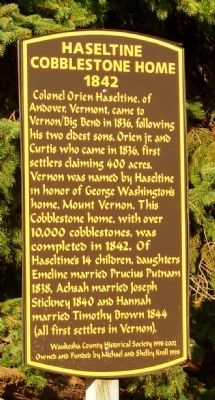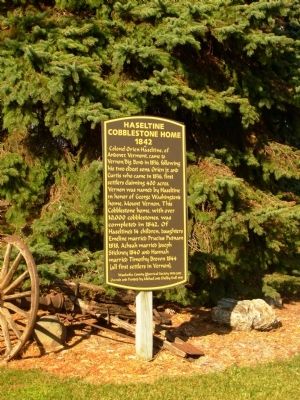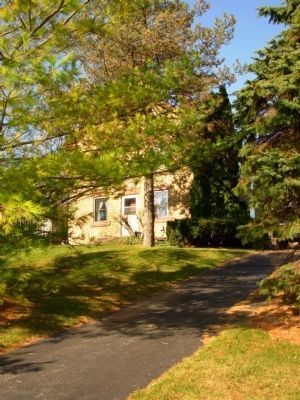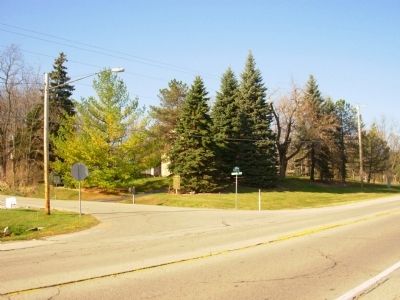Big Bend in Waukesha County, Wisconsin — The American Midwest (Great Lakes)
Haseltine Cobblestone House
1842
Erected 1998 by Waukesha County Historical Society - Owned and Funded by Michael and Shelby Kroll. (Marker Number 01-01.)
Topics. This historical marker is listed in these topic lists: Notable Buildings • Settlements & Settlers. A significant historical year for this entry is 1836.
Location. 42° 53.624′ N, 88° 12.549′ W. Marker is in Big Bend, Wisconsin, in Waukesha County. Marker is at the intersection of Big Bend Drive and Artesian Road, on the right when traveling south on Big Bend Drive. Touch for map. Marker is at or near this postal address: W230 S8235 Big Bend Dr, Big Bend WI 53103, United States of America. Touch for directions.
Other nearby markers. At least 8 other markers are within 4 miles of this marker, measured as the crow flies. Village of Big Bend (approx. 1.1 miles away); The Reformed Presbyterian Church of Vernon (approx. 1.6 miles away); Maney Ridge Prehistoric Effigy Mounds (approx. 1.7 miles away); Town of Vernon (approx. 2.1 miles away); Dodges Corners Cemetery (approx. 3 miles away); The Devil's Teapot (approx. 3.2 miles away); Old Muskego Town Hall (approx. 3.3 miles away); The Electric Interurban Muskego Centre Station (approx. 3½ miles away). Touch for a list and map of all markers in Big Bend.
Regarding Haseltine Cobblestone House. This home is a private residence. Please respect the family's privacy.
Additional commentary.
1. Built to Last
The Haseltine Cobblestone House of Big Bend/Vernon was completed in 1842 by Colonel Orien Haseltine. He came to the Vernon area in 1836 from Andover, Vermont with his wife and 12 children. There he purchased 400 acres of land, where he began building his new home in 1840.
The style of house came originally from England in the 16th century using flint stones and later in New York, but only was popular here for about 10 years. It was expensive, labor intensive, and took a lot of time to build. Approximately 10,000 cobblestones were used as a veneer over large square fieldstones, making the walls about 30 inches thick. Each stone was between 4 and 6 inches in diameter and set in straight lines with mortar in between and narrow vertical ridges of mortar to make it look more like bricks. Corners have large square fieldstone called "quoins."
The house is freestanding with interior walls carrying no weight. Two large wooden beams run the length of the house which supports the upper floor.
Vernon was named by Haseltine because of the resemblance to Mount Vernon, George Washington's home.
In the 1890s, underground pipes were laid near the house in an aborted scheme to pipe spring water to the Chicago World's Fair and Exposition in 1893.
The house is on the National Register of Historic Places and is one of several from Wisconsin.
— Submitted June 7, 2011, by Linda Hansen of Waukesha, Wisconsin.
Credits. This page was last revised on June 16, 2016. It was originally submitted on November 15, 2010, by Paul Fehrenbach of Germantown, Wisconsin. This page has been viewed 1,936 times since then and 48 times this year. Last updated on June 20, 2011, by Paul Fehrenbach of Germantown, Wisconsin. Photos: 1, 2, 3, 4. submitted on November 15, 2010, by Paul Fehrenbach of Germantown, Wisconsin. • Kevin W. was the editor who published this page.



